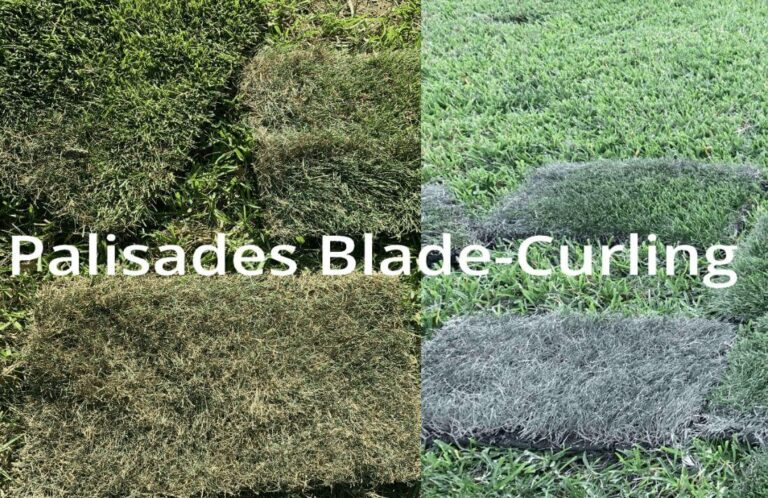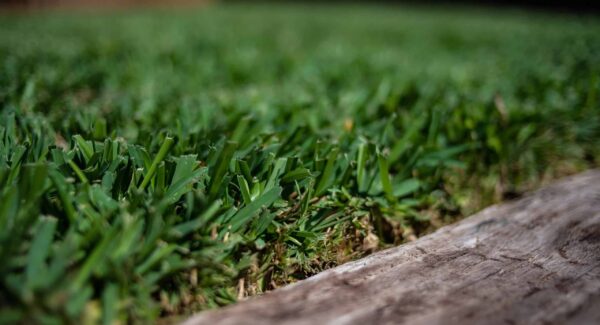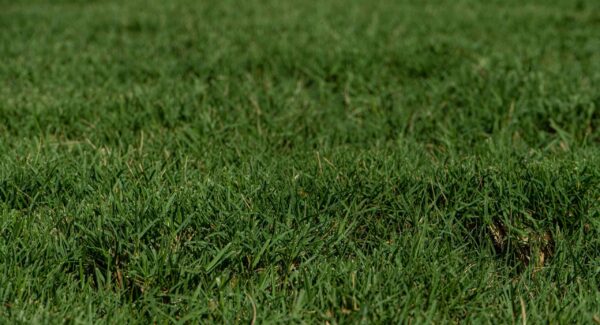Transplant Shock Or Different/Incorrect Variety

One of the most common characteristics of transplant shock is blade-curling, especially in Palisades Zoysia. Blade-curling occurs post-harvest because the root system is temporarily unable to access water from the earth. When the moisture in the soil & leaves is removed through evaporation & wind, the grass blades become dehydrated & begin to curl up, shrink, or fold. Without close inspection, these dry leaves can look just like a fine-bladed cultivar, native grass, or weed.
Further, the extent of blade curling can vary depending on ambient temperatures, wind speeds, and harvest time. For example, the grass on the first pallet harvested will stress more than the last because it will sit on the pallet a little longer. Likewise, the top layers on the pallet are more exposed to the sun & wind. This increased exposure causes these grass blocks to dry out quicker. Please look at the grass a few layers down, as this grass will better depict the variety’s characteristics.
Additionally, we rotate our maintenance and irrigation schedule. Some grass may have been more recently irrigated or received heavy coastal rain. Grass harvested from these areas will dry out a bit slower. Also, areas we have recently treated with a pre-emergent herbicide or high-nitrogen fertilizer will stress a little quicker. These are just a couple of examples where more significant blade-curling might be observed.
As pictured above, this gradual blade shrinkage will cause some blades to be more curled than other blades. Frequently, this will create a concern that there are different cultivars mixed into the blocks or pallets. When customers reach out to us concerned that they received the incorrect variety or grass contaminated with weeds, the issue is almost always due to blade-curling.
Blade-curling observed on the delivery day is a common concern that is resolved if the sod is promptly installed and watered. As long as you appropriately irrigate according to your yard conditions, soil type, and the weather, the blades will swell back to regular width.
Depending on ambient temperatures, weather, and your irrigation schedule, your grass blades should swell with proper water within a week or two. If you observe your grass declining versus improving over the next few weeks, please reach out to us as soon as the decline is observed. Please note that the grass will need a few days of proper irrigation once installed before noticeably improving. However, please do not wait until the grass has died to notify us.
Common Causes:
- Ambient Temperatures 80°F & Up
- Delayed Installation
- Improper Installation (gaps, overlapping, etc.)
- Grass Cultivar
- Harvest Time
- Farm Maintenance
- Wind Speeds
- Delayed Irrigation
- Irrigation Method (hand watering)
- Irrigation Malfunction
- Sloping/Water Runoff
- Top Blocks (more exposed to wind & sun)
Resolution:
- Day of Delivery Pictures
- Day of Delivery Contact
- Proper Ground Prep
- Prompt Installation
- Prompt Irrigation
- Proper Irrigation Method
- Proper Irrigation Schedule





